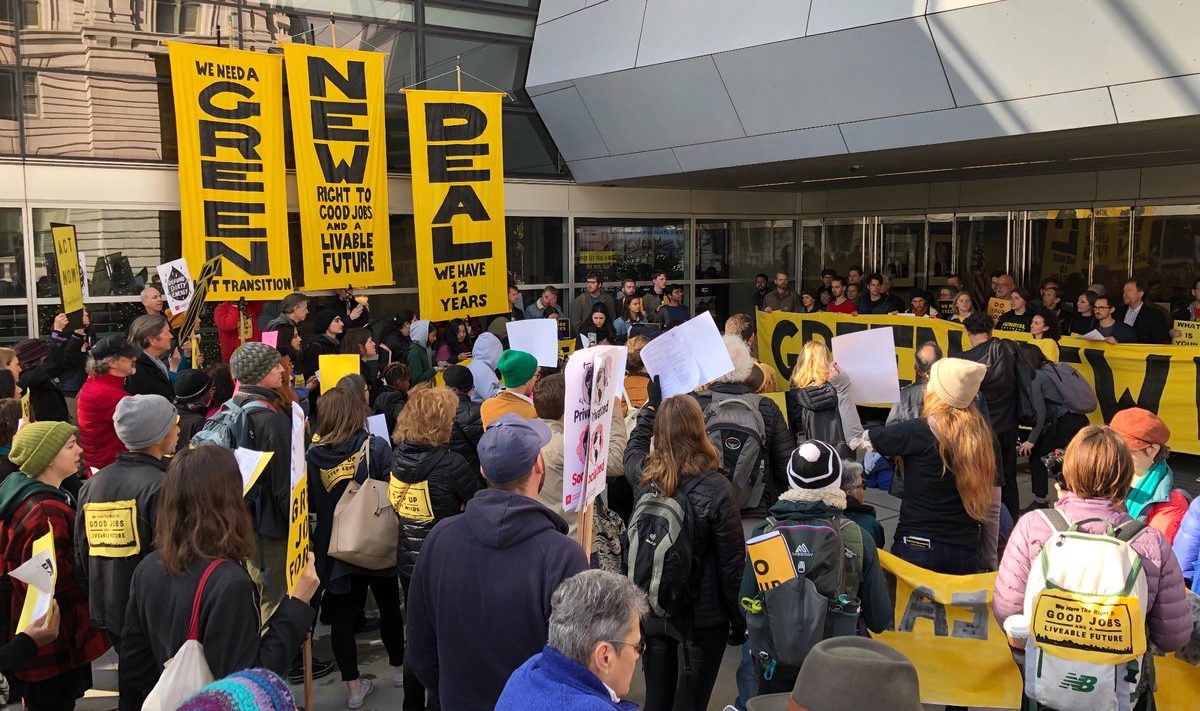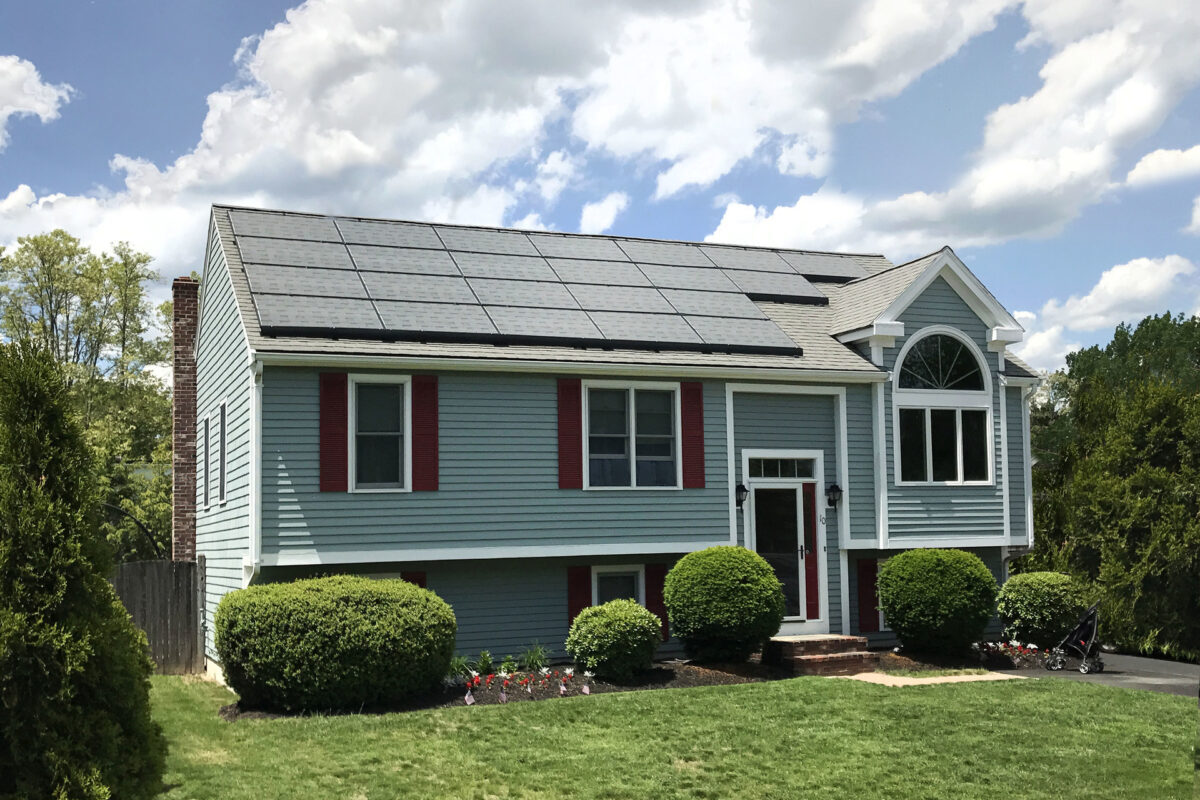The push for a Green New Deal led by the charismatic U.S. Representative Alexandria Ocasio-Cortez (AOC) is media gold, and is the highest-profile push for rapid decarbonization of our electricity supply to date. And while the unveiling of a Green New Deal resolution including 100% clean energy by 2030 is making headlines today and is a powerful political statement, the real policy action is elsewhere.
The main reason is that combination of a Republican majority in the Senate and the regressive position of Democratic Party leadership on climate issues – such as appointing coal-state Senator Joe Manchin (D-West Virginia) to the party’s leading position on the Energy and Natural Resources Committee – means the Markey-Cortez bill is not going to go any further than Waxman-Markey did.
Instead, policies to rapidly decarbonize the electricity system are much more likely to actually get enacted into law at the state level. This is especially true after five governors were elected last November who have vowed to set policies to replace all or nearly all fossil fuel-fired electricity generation with renewables.
In the past few weeks, bills have been introduced in at least six states which would set ambitious increases to renewable portfolio standards and put these states on a path to 80%-100% clean electricity by not later than 2050.
We look at these six bills below.
Minnesota: 100% “carbon free” by 2045/2050
Minnesota’s House File 700 would extend the state’s renewable portfolio standard to 80% by 2035, or 85% by 2035 for those utilities that own nuclear power plants, up from the current of 26.5% by 2025 or 31.5% by 2020 for Xcel. It would require that utilities source 100% of their electricity from “carbon-free” resources by 2050, and 2045 by those utilities that own nuclear power plants.
This bill has a strong likelihood of passing, as it already has the support of no less than 35 member of the state’s legislature who have signed on as co-authors.
Details:
- Bill number: HF 700
- Date introduced: February 4
- Sponsors: U.S. Representative Jamie Long (D), Senator Nick Frentz (D)
- Current status: Currently before the Energy and Climate Finance and Policy division
- Last action: Hearing held on February 5
- Bill text
New Mexico: 80% renewable by 2045
Twin bills have been introduced in the New Mexico Legislature to extend the state’s renewable portfolio standard to 50% by 2030 and 80% by 2045, from the current 20% by 2020. As the state has a newly minted Democratic Party trifecta in the House, Senate and governor’s mansion, the odds of these bills passing are better than before.
- Bill numbers: HB 283/SB 275
- Date introduced: January 21 (both)
- Sponsors: Senator Mimi Steward (D), Rep. Nathan Small (D), Senator William Soules (D), Elizabeth Stefanics (D)
- Current status: Before the House Environment and Natural Resources Committee & Senate Conservation Committee
- Bill text: (House) (Senate)
Massachusetts: 100% by 2045
Massachusetts technically already has a 100% renewable energy mandate, but the 2090 timeframe makes it rather absurd. Companion bills introduced in the Massachusetts House and Senate would set a 100% by 2045 renewable energy mandate, and have attracted more than 100 co-signers. However, these bill must get through the Massachusetts House of Representatives, which under the leadership of Speaker Robert DeLeo (D) has been where clean energy reforms go to either die or become so weak that there is little difference.
- Bills: SD 1625, HD 3092
- Sponsors: Senator James Eldridge (D), Rep. Marjorie Decker (D), Rep. Sean Garballey (D)
- Bill text (House) (Senate)
Illinois: 40% renewables by 2030
Illinois’ Path to 100 Act extends the state’s renewable portfolio standard to 40% by 2030, from the current 25% by 2026. According to the bill’s proponents, this would mean 6 GW of new large-scale solar, 6.5 GW of new wind, and 7.5 GW of new residential, commercial and community-scale solar.
As Illinois has seven nuclear power plants with a combined 12 GW of capacity, which supplied enough power to meet around 2/3 of the state’s demand last year. If Illinois reaches 40% renewable energy by 2030 and keeps these online, this should allow allow the state to get all of its electricity from zero-carbon sources and export the rest.
While a press release was issued declaring that Representative Will Davis (D) had announced this legislation, there was no bill with this title on file in the Illinois General Assembly, and as such we have not been able to confirm any details.
Virginia: 80% renewable energy by 2027
Virginia’s House Bill 2500 would implement an 80% renewable energy mandate by 2027. In contrast to the other four states with legislation proposing ambitious renewable energy standards, Virginia currently has no mandatory policy, but in 2018 did pass a bill that declared that installing 5 GW of wind and solar is “in the public interest”.
- Bill number: HB 2500
- Introduced: January 9
- Bill text
New York: 100% by 2030
AO 3565 would set a requirement that the state reach 100% renewable energy by 2030, with interim targets of 40% by 2022 and 70% by 2027. The bill does not include nuclear power, which would mean that two nuclear power plants upstate would need to shut down, as well as the Indian Point nuclear power plant, which is already phased to retire in 2020-2021.
This bill is even more ambitious than the targets that Governor Cuomo has announced, and further has the support of 30 co-sponsors and multi-sponsors.
- Bill number: AO 3565
- Introduced: January 29
- Sponsor: William Colton (D-Brooklyn)
- Last action: Referred to the Assembly’s Energy Committee
- Bill text
Currently, only four states and Washington D.C. have standards requiring 75% or more clean energy in their electricity supply: California (100% clean energy by 2045), Hawaii (100% renewables by 2045) and Vermont (75% by 2032). Massachusetts also technically falls within this group, but as we have mentioned the 2090 timeframe for decarbonization makes this target somewhat meaningless.
On January 18, Washington D.C. Mayor Muriel Bowser signed into law a 100% by 2032 renewable energy mandate, which will also super-charge solar in the nation’s capitol.
However, these may not be the only state-level jurisdictions to move to rapid decarbonization, as governors Jay Inslee (D-Washington), Jared Polis (D-Colorado) and Janet Mills (D-Maine) have also articulated plans to move their states to clean energy.
Correction: This article was corrected at 10:45 AM EST to include the 100% renewable energy legislation introduced in Massachusetts, as the sixth state known to pv magazine USA with active legislation for rapid decarbonization.
Editor’s note: Much of the research in this article was done using Advanced Energy Economy’s PowerSuite tool, which allows users to search through legislation and regulatory dockets in all 50 states plus Washington D.C. For more information, see the PowerSuite site.
This content is protected by copyright and may not be reused. If you want to cooperate with us and would like to reuse some of our content, please contact: editors@pv-magazine.com.









Rapid decarbonization via a DEEP DECARBONIZATION PATHWAY is preferred to the Socialists/Interventionism of forcing upon the free market a 100% renewable energy economy. This means nuclear power must be in the zero-carbon energy infrastructure mix.
Has anyone at PV MAGAZINE ever considered this:
https://smrllc.com/
in juxtaposition with PV and wind and splitting H20 into hydrogen and oxygen to fuel hydrogen fuel cell vehicles?
Carl, I have notified you via email that ALL CAPS is not acceptable in pv magazine’s comment sections. It is the internet equivalent of shouting.
No, we don’t actually need any nuclear technologies for deep decarbonization. In fact, combining nukes with wind and solar make deep decarbonization harder, not easier. See: https://pv-magazine-usa.com/2017/09/06/solar-and-nukes/
There is also a great irony that nuclear is so popular with the American right, which also calls for “free-market” policies, given that no form of electricity generation is as woefully dependent upon government largesse as nukes. This shows that the American right only believes in “free-market” policies when they align with its biases.
And now, we haven’t looked at small modular reactors. They aren’t a commercialized technology, and we aren’t spending a lot of time examining technologies which have not yet been commercialized – especially nuclear technologies, given the nuclear industry’s track record of failed promises (see: “too cheap to meter”).
Sounds great. How many have they built and installed? Ballpark figure is fine. How much did they cost to install? Ballpark is also fine for cost.